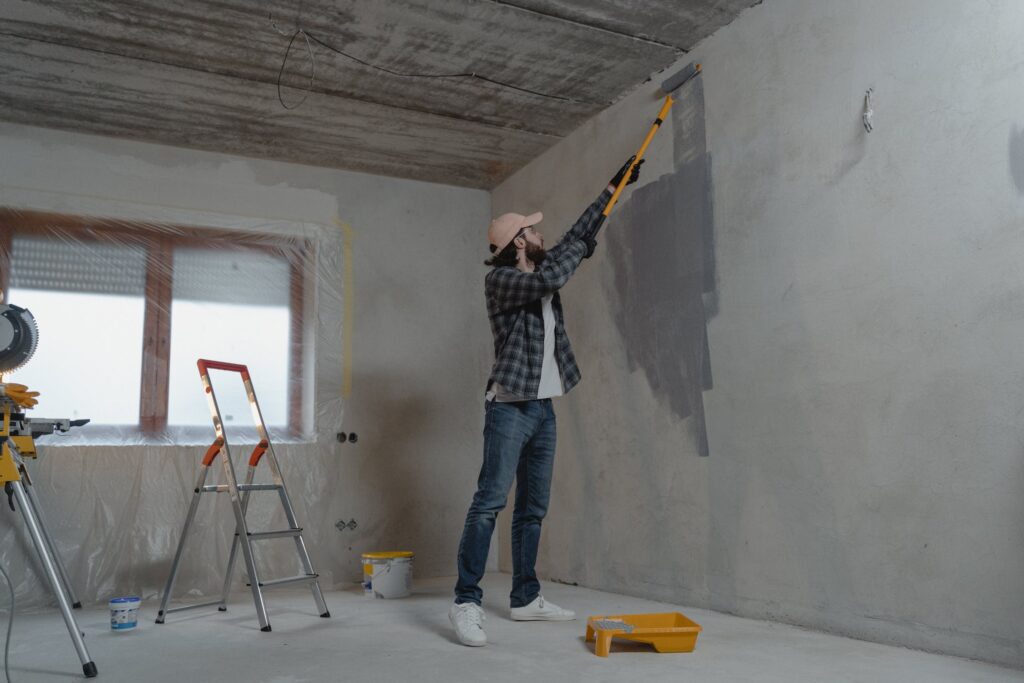Australia’s economy has been subject to innumerable change across the latest two year period. What we can attribute this to is the COVID-19 pandemic which has ebbed and flowed in terms of effect, spread and impact over this period of time. Although some industries have managed to profit from the global impacts of this pandemic such as tech and consumer market services, many others have not had the same kind of luck or success. One industry, and the industry of focus in this blog, has certainly had its troubles in this regard. We are of course referring to the construction industry. in this article, we will discuss the future of residential construction industry in Australia in 2022.
Physical resources, or more accurately, manual labour, makes up a huge chunk of the building and construction industry. Many projects that were set to begin construction within 2020 and 2021 have suffered indefinite delays or pushed to later dates to accommodate the introduction of lockdowns and restrictions. Considering the construction industry is one of the largest in Australia, the largest observable impact seen is how Australia’s economy has been greatly affected.
The construction industry is mainly concerned with the construction, demolition, renovation, maintenance or repair of building and infrastructure. It is an expansive industry, covering a large range of services, from procurement to social infrastructure to post-construction services. generating over $360 billion in revenue and producing around 9% of Australia’s GDP, the construction industry is one of the largest in the country. This is further evidenced by the fact that it has a projected annual growth rate of 2.4% in the next five years.
There isn’t just one area of construction. In fact, there are many, and each contributes to construction’s standing in some way. In this blog, we specifically focus on residential construction, which is related to construction for housing purposes. This encompasses many different types of living quarters such as houses, apartments, townhouses etc.
2021 saw some improvements compared to 2020, however the instance of fluctuating periods of stagnation remained, albeit to a lesser degree. An important takeaway from this period is that whilst slow and laboured, things began to pick up.
What we can say for sure is that things are starting to improve. 2022 has begun, and prospects are looking much more positive. What residential construction needs to succeed is a willingness to invest in projects to develop the country. Economic and social infrastructure is a topic that is being discussed amongst many squares, private and public. The question is, what does the future entail for the Australian construction industry in 2022?

Flexible working arrangements
One of the biggest changes to how residential construction operates in Australia is how work is conducted. The building and construction industry is built on physicality. What is constructed requires manual labour, and therefore more than one person could be working on something at any given time.
Despite this, what the pandemic has done is incite change. Social distancing did not exist as a concept before the pandemic, but it is now a must in most settings, including work. For an industry that needs the physical aspect, the challenge to working around this has been confusing for many.
What might become a development is a lower amount of workers on-site at particular times of the day. Although this could have a negative effect on the progression of projects, ultimately prolonging them to longer end dates, it is a significant upgrade to previous instances where projects were previously shelved or kept for later dates of completion. As long as there are housing projects in the works and being discussed for commencement residential construction as an area shouldn’t have too much difficulty in working around arrangements of employment.
One of the reasons why this is the case is because a skilled shortage of labour has existed within residential construction for a considerable amount of time. Demand and supply are at varying levels, with the former being high and the latter being low, therefore unemployment levels from construction will not necessarily have a big impact on the economy.
Even though there is a smaller pool of jobs available, employment is expected to increase in 2022. As expected, there was a sharp rise in the unemployment rate during the pandemic, but this figure has shrunk over time and will continue to do so over the year.
More regulations
Prior to writing this blog, the construction industry was already one of the most regulated industries in the country. It will most probably see more regulations in the coming year, particularly in the area of residential construction. With more rules being enforced, a more skilled set of labour will develop as a result.
Residential projects need the right people with thoroughly honed expertise and skill who understand the requirements for a project to be sufficient and satisfactory for living purposes. This is why we will notice more regulations coming to fruition.
For instance, how many people can be on a construction site at any given time, or certain requirements that different types of construction have to be deemed fit for purpose are areas which could be altered or made more airtight.
The pandemic has only increased this need for regulations. Although it may seem stringent, it is one of the keys to ensuring more projects are greenlit over the coming year.

Increasing population growth
For a considerable amount of time, Australia has been dependent on population growth to help fill voids in areas lacking in employment, particularly where skilled labour is limited. Construction, and residential construction as a consequence, struggles in this aspect, which has been further hampered by the pandemic.
Lockdowns have blocked mass immigration to Australia occurring for foreign workers, and the gaps that developed have not been able to be filled. As restrictions ease, the government will be focusing on encouraging more people to move to Australia to reduce the unemployment level, especially for building and construction. This will help construction companies hire more talent to improve the quality of residential infrastructure through more expertise and greater efficiency.
Shortages for natural and material resources reduced
With new variants of the COVID-19 disease disrupting society on multiple fronts, increased delays in resources have become the norm. Numerous industries have not been able to cope with the sudden changes, which has meant that supply of goods have decreased and demand is too high, therefore they cannot meet each other at an appropriate level.
Falling cases of the virus, along with the easing of restrictions will contribute to the shortages reducing over time. This will not be overnight, unfortunately, because optimal levels of production and trade will take time to return. But at some point this year the drop will begin to occur.
More technology
The language of today is technology. Everything is beginning to integrate technology, and construction is no exception.
Saving costs is something that many will be focusing on, especially in the midst of the pandemic. We are now implored to continuously find ways to optimise productivity and efficiency. How do you maintain, or even increase levels of productivity if you can only have less staff at any given time of the day?
The simple answer is more tech. Bringing in new tech to replace machinery, hardware and some aspects of manual labour will help residential construction to meet demand and ensure economic efficiency and productivity, which only helps to grow the economy and residential construction as an area.
Given residential construction’s importance, it is a must that it improves in 2022. Even though last two years have been difficult, things are changing. These trends are the forecast for 2022, and with the implementation of these trends there will only be good things to expect in the coming year.
If you are looking for a good construction software that makes use of good project management functionality, estimate and financial/accounting tool functionality, job management, scheduling and planning and support functionalities and more. WunderBuild is a construction management software that aims to provide all of these functionalities and more to bring out the best outcomes for a project.
It is currently offering a free trial, visit here to try WunderBuild for free.




